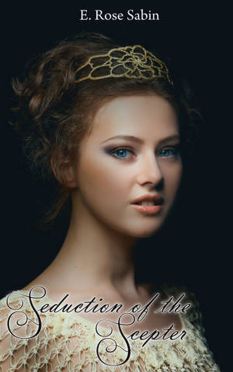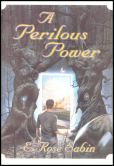 Today’s blog raises a question I don’t have an answer for: How much description is too much, and how little description is too little?
Today’s blog raises a question I don’t have an answer for: How much description is too much, and how little description is too little?
When I write, I tend to be spare in regard to description. I think it’s largely due to the fact that when I read, I prefer to use my imagination to visualize a character’s appearance and dress. Also, I don’t like reading a story that pauses the action to give lengthy descriptions unless those descriptions are vital to the plot. In some stories the setting plays such a vital part that it must be described in detail. In all stories some sense of place is necessary, but the amount of description needed to provide that sense of place varies according to the type of story it is.
 In my book Seduction of the Scepter, I set the novel in a fictitious country, but I located that country in our world in a specific historical time and in a specific region of the world: eastern Europe in the mid 1700s. Although using a fictitious country allowed me latitude to invent the political system and certain customs, those had to at least fit into the time period. Although I used no actual historical events or personages, I researched the styles of dress and hair, the popular foods, the music and dance, the religious and social customs of the era and drew on that research to make the story believable.
In my book Seduction of the Scepter, I set the novel in a fictitious country, but I located that country in our world in a specific historical time and in a specific region of the world: eastern Europe in the mid 1700s. Although using a fictitious country allowed me latitude to invent the political system and certain customs, those had to at least fit into the time period. Although I used no actual historical events or personages, I researched the styles of dress and hair, the popular foods, the music and dance, the religious and social customs of the era and drew on that research to make the story believable.
When Lara, my protagonist, attended a ball, I had to describe the ball gowns worn by the women and the formal dress of the men in a manner consistent with the time and general setting. What was served at a court banquet had to be courses and dishes that would be available and popular in Europe in that time period. So I used more complete descriptions than I tend to use in novels set in wholly fictitious worlds. Also, since the novel is in first person, told entirely through journal entries written by Lara, giving detailed description in her journal is consistent with her character, which also required including more description than I normally do.
In my Arucadi novels, which are set in a wholly imaginary world, I needed a good bit of description of place to give the reader indication in the early novels (Mistress of the Wind, Bringers of Magic, A Mix of Magics) that the world is not medieval but is at the start of the industrial age, with trains, hand-operated sewing machines (important to the plot), bicycles, but as yet no cars and certainly no airplanes. The conflict between magic and machines is vital to the plot, especially in the first two novels. In A Perilous Power, set in the same world but in a later time period, the technology is more advanced. Buses provide transportation in towns, and cars are starting to appear in the large cities but are still unknown in rural areas. A School for Sorcery, When the Beast Ravens,and Bryte’s Ascent are set in a slightly later period, approximately equivalent to the 1920s in America, with cars, telephones, and electricity more commonplace. However, unlike our world, air travel is still unknown in Arucadi. In these novels, all told in third person, while I describe settings in some detail, I am more spare in describing dress and personal appearance. Possibly too much so.
When A Perilous Power was going through the editing process,  my editor asked me for a description the cover artist could use in depicting Trevor, my protagonist. Only at that point did I realize I had never described Trevor, though I had described his best friend and sidekick, Les, and other characters to at least some degree. I had to go back to the manuscript and include Trevor’s physical description before complying with my editor’s request. Even then I didn’t describe clothing in much detail, which may be why the cover artist of the hard cover book depicted Trevor in modern jeans and shirt instead of clothing appropriate to a period equivalent to our late 19th century. (The cover artist for the later appearing paperback got the clothing right.)
my editor asked me for a description the cover artist could use in depicting Trevor, my protagonist. Only at that point did I realize I had never described Trevor, though I had described his best friend and sidekick, Les, and other characters to at least some degree. I had to go back to the manuscript and include Trevor’s physical description before complying with my editor’s request. Even then I didn’t describe clothing in much detail, which may be why the cover artist of the hard cover book depicted Trevor in modern jeans and shirt instead of clothing appropriate to a period equivalent to our late 19th century. (The cover artist for the later appearing paperback got the clothing right.)
One of my beta readers for The Twisted Towers, the novel I have currently nearly ready for publication, has said I need more physical description of places, people, and apparel. I probably do, but the novel is already quite long, and I’m loath to add much more to it. So I’m back to the question with which I started this blog: How much description is too much, and how little description is too little?
Like the Arucadi novels, the new novel, a stand-alone epic fantasy, is set in an early industrial period in which recently invented “horseless carriages” run on steam engines, and electricity provides lighting in public buildings and the homes of the wealthy, but is still not available to the lower classes. The setting is the capital city of a country added by conquest to an extensive empire. The plot involves a commoner citizen of that conquered nation who weds the crown prince of the empire but is so resented by the imperial nobility that her marriage is in danger, her hope of helping her people is thwarted, and assassination attempts threaten her life. Clearly, the reader needs a sense of place and of the general time period, but how much physical description of characters and clothing is needed? The novel has a large cast of characters, and I go into the viewpoints of seven of the leading characters. How detailed would you readers want the descriptions of the physical appearance and dress of these and other characters?
I’d like to hear the opinions of readers and of writers as to the extent and type of description you prefer. What characteristics must be included, and what can be left to the reader’s imagination? Please share your thoughts!
This guest post is by novelist E. Rose Sabin, (Seduction of the Scepter, WiDo Publishing 2012), originally appearing on her blog at erosesabin.wordpress.com. It deals with a typical writerly issue: how much character description to include? The post is re-published here with Sabin’s permission.
